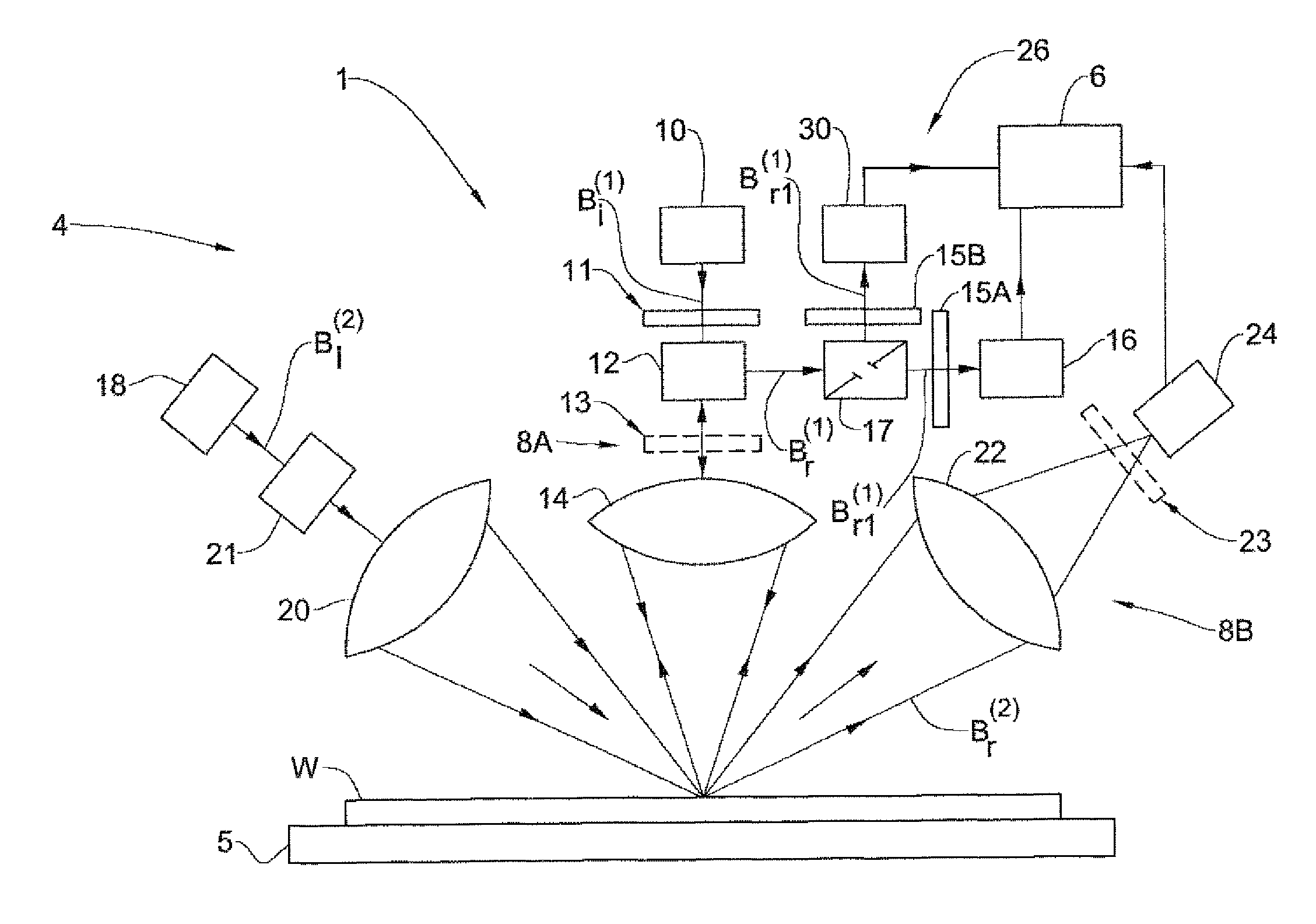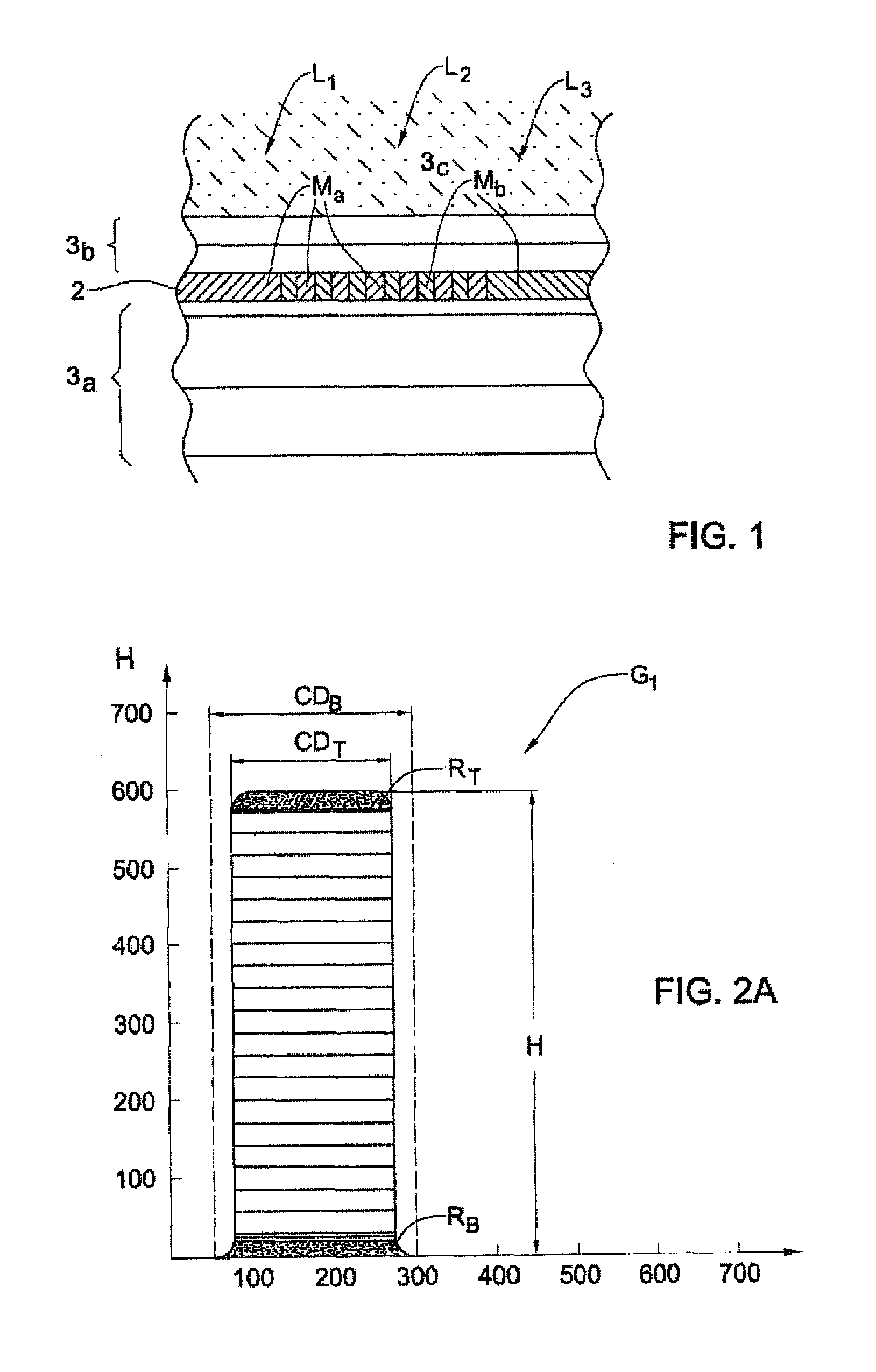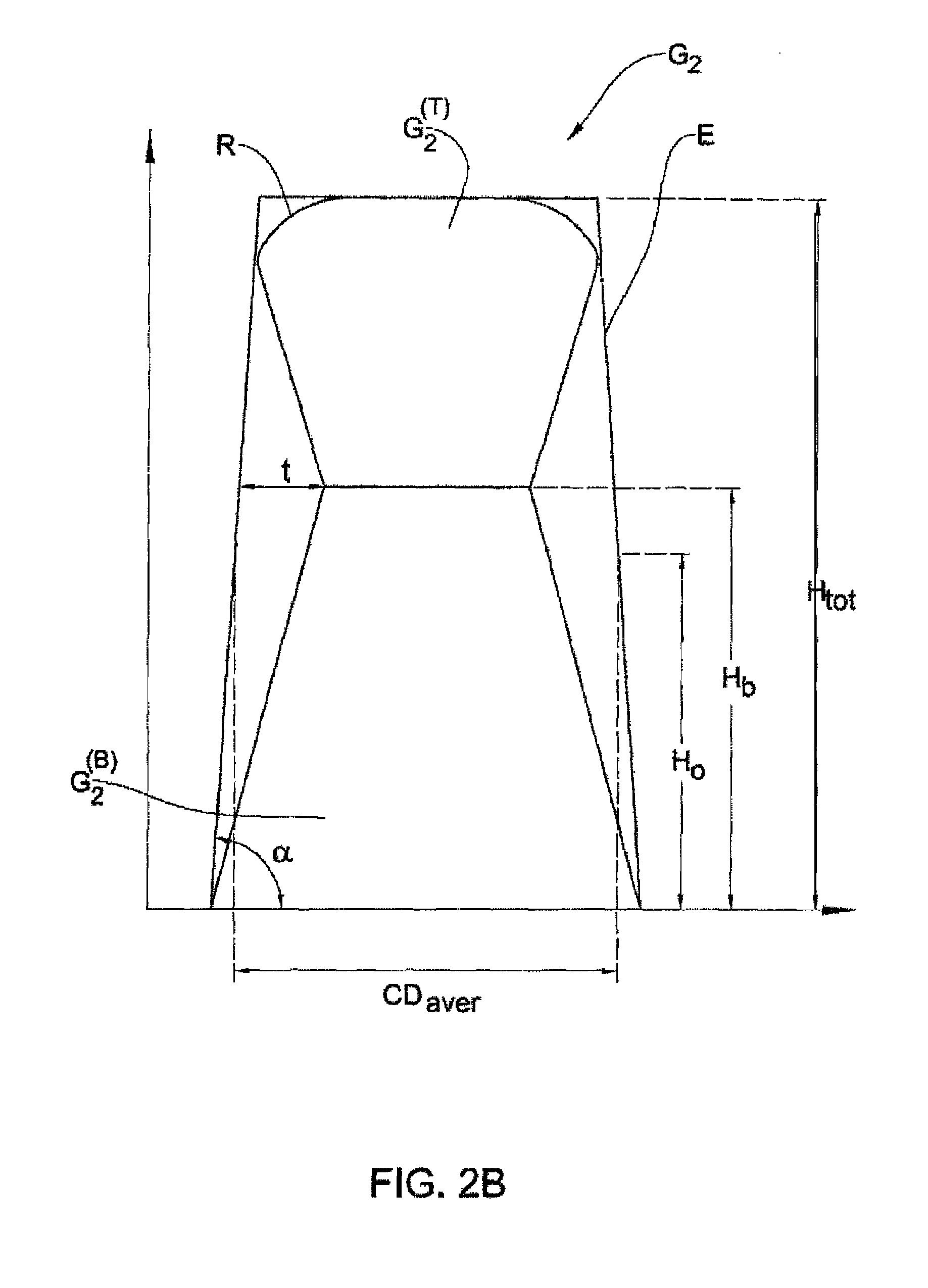Method and system for measuring patterned structures
a pattern structure and pattern technology, applied in the field of measurement techniques, can solve the problems of grating diffraction efficiency, less effective, polarisation-affecting properties, etc., and achieve the effects of high accuracy, good chance of obtaining accurate results, and confidence in results
- Summary
- Abstract
- Description
- Claims
- Application Information
AI Technical Summary
Benefits of technology
Problems solved by technology
Method used
Image
Examples
Embodiment Construction
[0054]Referring to FIG. 1, there is illustrated (not in a correct scale) a wafer W that typically has a plurality of stacks formed by different layers, and presents a structure with a periodic pattern. Measurements are aimed at determining the profile of the periodic pattern (“grating”) formed in one or more of the wafer's layers—layer 2 in the present example. Generally, the periodic pattern may involve more than a single layer (which are not specifically shown here), provided that the periodicity in all patterned layers is equivalent. This periodicity may be either one-dimensional (i.e. repeated lines) or two-dimensional periodicity (i.e. finite-area units repeatedly placed on the nodes of a two-dimensional grid). The patterned layer is enclosed between a plurality of un-patterned, underlying layers 3a and a plurality of un-patterned, overlying layers 3b terminated by a background medium 3c (e.g. air).
[0055]The patterned layer 2 may include both patterned and un-patterned sites. I...
PUM
 Login to View More
Login to View More Abstract
Description
Claims
Application Information
 Login to View More
Login to View More - R&D
- Intellectual Property
- Life Sciences
- Materials
- Tech Scout
- Unparalleled Data Quality
- Higher Quality Content
- 60% Fewer Hallucinations
Browse by: Latest US Patents, China's latest patents, Technical Efficacy Thesaurus, Application Domain, Technology Topic, Popular Technical Reports.
© 2025 PatSnap. All rights reserved.Legal|Privacy policy|Modern Slavery Act Transparency Statement|Sitemap|About US| Contact US: help@patsnap.com



